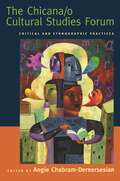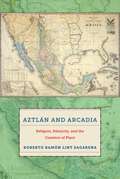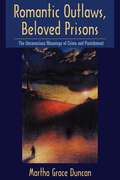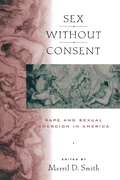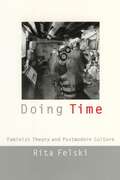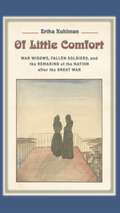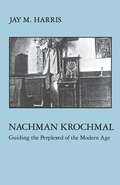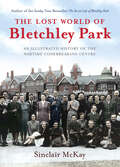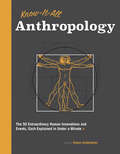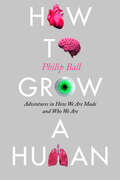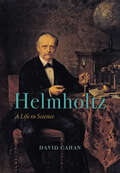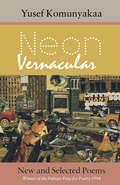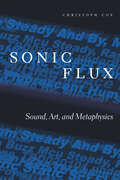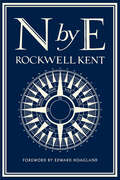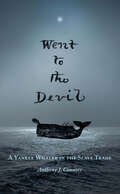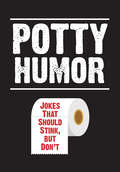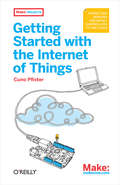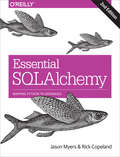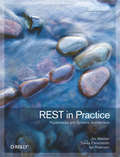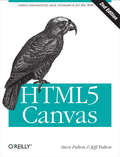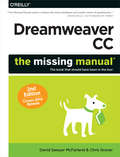- Table View
- List View
Arab Revolutions in Context: Civil Society and Democracy in a Changing Middle East (Islamic Studies Series)
by Fethi Mansouri Shahram Akbarzadeh Benjamin IsakhanFrom late 2010 a series of dramatic and unprecedented events swept across the Middle East and North Africa, toppling several autocratic regimes that had held power for decades and ushering in a new climate of dissent and democratisation. The Arab Revolutions in Context seizes a unique opportunity to reflect on these seismic events, their causes and consequences, and the core issues facing the region as it moves forward. This volume is more than a collection of detailed thematic essays.It situates the Arab Revolutions within their broader contextual backgrounds—showing that a unique set of historical events, as well as local, regional and global dynamics, has converged to provide the catalyst that triggered the recent revolts-and also within a new conceptual framework. The argument here is that the Arab Revolutions pose a very specific challenge to conventional wisdom concerning democracy and democratisation in the Middle East. The Arab Revolutions in Context is the first volume of its kind to address the Arab Revolutions and the varying analyses, debates and discussions that they have stimulated. Islamic Studies Series - Volume 12
The Chicana/o Cultural Studies Forum: Critical and Ethnographic Practices
by Angie Chabram-DernersesianThe Chicana/o Cultural Studies Forum brings together a diverse group of scholars whose work spans the interdisciplinary fields of Chicana/o studies and cultural studies. Editor Angie Chabram-Dernersesian provides an overview of current debates, locating Chicana/o cultural criticism at the intersections of these fields. She then acts as moderator of a virtual roundtable of critics, including Frances Aparicio, Lisa Lowe, George Lipsitz, Wahneema Lubiano, Renato Rosaldo, José David Saldívar, and Sonia Saldívar-Hull. This highly collaborative and deeply interdisciplinary project addresses the questions: What is the relationship between Chicana/o studies and cultural studies? How do we do cultural studies from within Chicana/o cultural studies? How do Chicana/o cultural studies formations (hemispheric, borderland, and feminist) intermingle? The lively conversations documented here attest to the vitality and spirit of Chicana/o cultural studies today and track the movements between disciplines that share an interest in the study of culture, power relations, identity, and representation. This book offers a unique resource for understanding not just the development of Chicana/o cultural studies, but how new social movements and epistemologies travel and affiliate with progressive forms of social inquiry in the global era.
Aztlán and Arcadia: Religion, Ethnicity, and the Creation of Place
by Roberto Ramón SagarenaIn the wake of the Mexican-American War, competing narratives of religious conquest and re-conquest were employed by Anglo American and ethnic Mexican Californians to make sense of their place in North America. These “invented traditions” had a profound impact on North American religious and ethnic relations, serving to bring elements of Catholic history within the Protestant fold of the UnitedStates’ national history as well as playing an integral role in the emergence of the early Chicano/a movement.Many Protestant Anglo Americans understood their settlement in the far Southwest as following in the footsteps of the colonial project begun by Catholic Spanish missionaries. In contrast, Californios—Mexican-Americans and Chicana/os—stressed deep connections to a pre-Columbian past over to their own Spanish heritage. Thus, as Anglo Americans fashioned themselves as the spiritual heirs to the Spanish frontier, many ethnic Mexicans came to see themselves as the spiritual heirs to a southwestern Aztec homeland.
Masculinities and the Law: A Multidimensional Approach (Families, Law, and Society #13)
by Ann C. McGinleyAccording to masculinities theory, masculinity is not a biological imperative but a social construction. Men engage in a constant struggle with other men to prove their masculinity. Masculinities and the Law develops a multidimensional approach. It sees categories of identity—including various forms of raced, classed, and sex-oriented masculinities—as operating simultaneously and creating different effects in different contexts.By applying multidimensional masculinities theory to law, this cutting-edge collection both expands the field of masculinities and develops new thinking about important issues in feminist and critical race theories. The topics covered include how norms of masculinity influence the behavior of policemen, firefighters, and international soldiers on television and in the real world; employment discrimination against masculine cocktail waitresses and all transgendered employees; the legal treatment of fathers in the U.S. and the ways unauthorized migrant fathers use the dangers of border crossing to boost their masculine esteem; how Title IX fails to curtail the masculinity of sport; the racist assumptions behind the prison rape debate; the surprising roots of homophobia in Jamaican dancehall music; and the contradictions of the legal debate over women veiling in Turkey. Ultimately, the book argues that multidimensional masculinities theory can change how law is interpreted and applied.
Romantic Outlaws, Beloved Prisons: The Unconscious Meanings of Crime and Punishment
by Martha Grace DuncanAn ex-convict struggles with his addictive yearning for prison. A law-abiding citizen broods over his pleasure in violent, illegal acts. A prison warden loses his job because he is so successful in rehabilitating criminals. These are but a few of the intriguing stories Martha Grace Duncan examines in her bold, interdisciplinary book Romantic Outlaws, Beloved Prisons. Duncan writes: "This is a book about paradoxes and mingled yarns - about the bright sides of dark events, the silver linings of sable clouds." She portrays upright citizens who harbor a strange liking for criminal deeds, and criminals who conceive of prison in positive terms: as a nurturing mother, an academy, a matrix of spiritual rebirth, or a refuge from life's trivia. In developing her unique vision, Duncan draws on literature, history, psychoanalysis, and law. Her work reveals a nonutopian world in which criminals and non-criminals--while injuring each other in obvious ways--nonetheless live together in a symbiotic as well as an adversarial relationship, needing each other, serving each other, enriching each other's lives in profound and surprising fashion.
Sex without Consent: Rape and Sexual Coercion in America
by Merril D. SmithA group of men rape an intoxicated fifteen year old girl to "make a woman of her." An immigrant woman is raped after accepting a ride from a stranger. A young mother is accosted after a neighbor escorts her home. In another case, a college frat party is the scene of the crime. Although these incidents appear similar to accounts one can read in the newspapers almost any day in the United States, only the last one occurred in this century. Each, however, involved a woman or girl compelled to have sex against her will. Sex without Consent explores the experience, prosecution, and meaning of rape in American history from the time of the early contact between Europeans and Native Americans to the present. By exploring what rape meant in particular times and places in American history, from interracial encounters due to colonization and slavery to rape on contemporary college campuses, the contributors add to our understanding of crime and punishment, as well as to gender relations, gender roles, and sexual politics.
Doing Time: Feminist Theory and Postmodern Culture (Cultural Front)
by Rita FelskiContemporary theory is full of references to the modern and the postmodern. How useful are these terms? What exactly do they mean? And how is our sense of these terms changing under the pressure of feminist analysis? In Doing Time, Rita Felski argues that it makes little sense to think of the modern and postmodern as opposing or antithetical terms. Rather, we need a historical perspective that is attuned to cultural and political differences within the same time as well as the leaky boundaries between different times. Neither the modern nor the postmodern are unified, coherent, or self-evident realities. Drawing on cultural studies and critical theory, Felski examines a range of themes central to debates about postmodern culture, including changing meanings of class, the end of history, the status of art and aesthetics, postmodernism as "the end of sex," and the politics of popular culture. Placing women at the center of analysis, she suggests, has a profound impact on the way we thing about historical periods. As a result, feminist theory is helping to reshape our vision of both the modern and the postmodern.
Of Little Comfort: War Widows, Fallen Soldiers, and the Remaking of the Nation after the Great War
by Erika KuhlmanDuring and especially after World War I, the millions of black-clad widows on the streets of Europe’s cities were a constant reminder that war caused carnage on a vast scale. But widows were far more than just a reminder of the war’s fallen soldiers; they were literal and figurative actresses in how nations crafted their identities in the interwar era. In this extremely original study, Erika Kuhlman compares the ways in which German and American widows experienced their postwar status, and how that played into the cultures of mourning in their two nations: one defeated, the other victorious. Each nation used widows and war dead as symbols to either uphold their victory or disengage from their defeat, but Kuhlman, parsing both German and U.S. primary sources, compares widows’ lived experiences to public memory. For some widows, government compensation in the form of military-style awards sufficed. For others, their own deprivations, combined with those suffered by widows living in other nations, became the touchstone of a transnational awareness of the absurdity of war and the need to prevent it.
Nachman Krochmal: Guiding the Perplexed of the Modern Age (Modern Jewish Masters)
by Jay Harris"A well-organized and engaging read."-Religious Studies ReviewThe first in-depth look at...an important nineteenth century Jewish thinker and historian. Well-written [and] well- researched."-The Jerusalem Post Magazine"A significant contribution to our understanding of the rise of modern Judaism in its East European manifestation."-ChoiceHarris examines Nachman Krochmal's work, particularly as it aimed to guide Jews through the modern revolution in metaphysical and historical thinking, thus enabling them to commit themselves to Judaism without sacrificing intellectual integrity.
The Lost World of Bletchley Park: An Illustrated History of the Wartime Codebreaking Centre
by Sinclair McKayAn illustrated history of the English manor house and grounds that were home to the famous World War II codebreakers.The huge success of Sinclair’s The Secret Life of Bletchley Park—a quarter of a million copies sold to date—has been symptomatic of a similarly dramatic increase in visitors to Bletchley Park itself, the Victorian mansion in Buckinghamshire now open as an engrossing museum of wartime codebreaking. Aurum is publishing the first comprehensive illustrated history of this remarkable place, from its prewar heyday as a country estate under the Liberal MP Sir Herbert Leon, through its wartime requisition with the addition of the famous huts within the grounds, from the place where modern computing was invented and the German Enigma code was cracked, to its post-war dereliction and then rescue towards the end of the twentieth century as a museum whose visitor numbers have more than doubled in the last five years. Featuring over two hundred photographs, some previously unseen, and text by Sinclair McKay, this will be an essential purchase for everyone interested in the place where codebreaking helped to win the war.
Know-It-All Anthropology: The 50 Extraordinary Human Innovations and Events, Each Explained in Under a Minute (Know It All Ser. #9)
by Simon UnderdownAn informative reference containing concise explanations for the major anthropological discoveries in human physical, cultural, and social history.Who are we? What is it about our species that sets us apart from every other living creature, past and present, on this planet?These are perennially compelling questions about human evolution and development that continue to cudgel the best brains on earth. Know-It-All Anthropology seeks to understand the roots of our common humanity, the diversity of cultures and world-views, and the organization of social relations and practices.If you only have under a minute, that is enough time—by reading this book—to meet the ancestors and master the basic ideas, personalities, controversies, and future directions of the study of humankind.The Know It All takes a revolutionary approach to learning about the subjects you really feel you should understand but have never gotten around to studying. Each book selects a popular topic and dissects it into the fifty most significant ideas at its heart. Each idea, no matter how complex, is explained in three hundred words and one picture, all digestible in under a minute.Other titles in this series include: Know It All Chemistry, Know It All Classical Music, Know It All Energy, Know It All Fashion, Know It All Great Inventions, Know It All Jazz, Know It All Medicine, Know It All Shakespeare, Know It All Whiskey, Know It All Wine, Space In 30 Seconds, Sports in 30 Seconds.
How to Grow a Human: Adventures in How We Are Made and Who We Are
by Philip BallThe award-winning science writer shares “a winding romp through advances in cell biology [that] pushes readers to ponder the boundaries of life” (Science).In the summer of 2017, scientists removed a tiny piece of flesh from Philip Ball’s arm and turned it into a rudimentary “mini-brain.” The skin cells, removed from his body, did not die but were instead transformed into nerve cells that independently arranged themselves into a dense network and communicated with each other, exchanging the raw signals of thought. This was life—but whose? That disconcerting question is the focus of Philip Ball’s How to Grow a Human.In this mind-bending tour of cutting-edge cell biology, Ball shows how recent innovations could lead to tailor-made replacement organs; new medical advances for repairing damage and assisting conception; and new ways of “growing a human.” Such methods would also create new options for gene editing, with all the attendant moral dilemmas. Ball argues that these advances can never be “just about the science,” because they are already laden with a host of social narratives, preconceptions, and prejudices. But beyond even that, these developments raise provocative questions about identity and self, birth and death, and force us to ask how mutable the human body really is—and what forms it might take in years to come.
Civil War and the Indian Wars
by Roy BirdMany historians of the Indian wars seem to credit the War Between the States as a significant factor in the uprising of numerous tribes during these same years. In fact, the continuous exposure to white civilization, the incursion by whites with modern technology, and an ambiguous government policy had caused frustration as far back as two decades before the Civil War began.This account of some of the conflicts between American Indians and whites from 1861-1865 depicts the struggles among disenfranchised native peoples on the frontier and expansion of a predominantly white culture into the West. While whites fought whites from the Atlantic seaboard to the prairies of Kansas, great nations in Arizona, New Mexico, Utah, Montana, the Dakotas, Colorado, Nebraska, Kansas, Texas, Missouri, and Minnesota struck back at the incursion of white intruders.The book neither condemns nor justifies the actions of either side�rather, it is a thorough, chronological examination of the events and incidents that occurred during these four years. Based on confrontations as they were recorded by contemporary writers and historians, the book is not separated into individual accounts of the conflicts as many historians have previously done. Instead, Bird�s approach is to treat all the Indian wars fought between 1861 and 1865 in order of their occurrence to examine the government�s and the military's policies toward the "wild" American Indians of the West.
Helmholtz: A Life in Science (California Studies In The History Of Science Ser. #10)
by David CahanHermann von Helmholtz was a towering figure of nineteenth-century scientific and intellectual life. Best known for his achievements in physiology and physics, he also contributed to other disciplines such as ophthalmology, psychology, mathematics, chemical thermodynamics, and meteorology. With Helmholtz: A Life in Science, David Cahan has written a definitive biography, one that brings to light the dynamic relationship between Helmholtz’s private life, his professional pursuits, and the larger world in which he lived. ? Utilizing all of Helmholtz’s scientific and philosophical writings, as well as previously unknown letters, this book reveals the forces that drove his life—a passion to unite the sciences, vigilant attention to the sources and methods of knowledge, and a deep appreciation of the ways in which the arts and sciences could benefit each other. By placing the overall structure and development of his scientific work and philosophy within the greater context of nineteenth-century Germany, Helmholtz also serves as cultural biography of the construction of the scientific community: its laboratories, institutes, journals, disciplinary organizations, and national and international meetings. Helmholtz’s life is a shining example of what can happen when the sciences and the humanities become interwoven in the life of one highly motivated, energetic, and gifted person.
Neon Vernacular: New and Selected Poems (Wesleyan Poetry Series)
by Yusef KomunyakaaThis Pulitzer Prize–winning collection pairs twelve new poems with work from seven previous volumes by &“one of the most extraordinary poets writing today&” (Kenyon Review). The poetry of Yusef Komunyakaa traverses psychological and physical landscapes, mining personal memory to understand the historical and social contexts that shape experience. Neon Vernacular charts the development of his characteristic themes and concerns by gathering work from seven of his previous collections, along with a dozen new poems that continue the autobiographical trajectory of his previous collection, Magic City. Here, Komunyakaa shares an intimate and evocative life journey, from his childhood in Bogalusa, Louisiana—once a center of Klan activity and later a focus of Civil Rights efforts—to his stormy relationship with his father, his high school football days, and his experience of the Vietnam War and his difficult return home. Many of the poems collected here are drawn from limited editions and are no longer available.
Sonic Flux: Sound, Art, and Metaphysics
by Christoph CoxFrom Edison’s invention of the phonograph through contemporary field recording and sound installation, artists have become attracted to those domains against which music has always defined itself: noise, silence, and environmental sound. Christoph Cox argues that these developments in the sonic arts are not only aesthetically but also philosophically significant, revealing sound to be a continuous material flow to which human expressions contribute but which precedes and exceeds those expressions. Cox shows how, over the course of the twentieth and twenty-first centuries, philosophers and sonic artists have explored this “sonic flux.” Through the philosophical analysis of works by John Cage, Maryanne Amacher, Max Neuhaus, Christian Marclay, and many others, Sonic Flux contributes to the development of a materialist metaphysics and poses a challenge to the prevailing positions in cultural theory, proposing a realist and materialist aesthetics able to account not only for sonic art but for artistic production in general.
N by E
by Rockwell KentA classic tale of seafaring, shipwreck, and survival, reprinted from Wesleyan University Press's 1978 facsimile of the original. When artist, illustrator, writer, and adventurer Rockwell Kent first published N by E in a limited edition in 1930, his account of a voyage on a 33-foot cutter from New York Harbor to the rugged shores of Greenland quickly became a collectors' item. Little wonder, for readers are immediately drawn to Kent's vivid descriptions of the experience; we share "the feeling of wind and wet and cold, of lifting seas and steep descents, of rolling over as the wind gusts hit," and the sound "of wind in the shrouds, of hard spray flung on a drum-tight canvas, of rushing water at the scuppers, of the gale shearing a tormented sea." When the ship sinks in a storm-swept fjord within 50 miles of its destination, the story turns to the stranding and subsequent rescue of the three-man crew, salvage of the vessel, and life among native Greenlanders. Magnificently illustrated by Kent's wood-block prints and narrated in his poetic and highly entertaining style, this tale of the perils of killer nor'easters, treacherous icebergs, and impenetrable fog—and the joys of sperm whales breaching or dawn unmasking a longed-for landfall—is a rare treat for old salts and landlubbers alike.
Went to the Devil: A Yankee Whaler in the Slave Trade
by Anthony J. ConnorsEdward Davoll was a respected New Bedford whaling captain in an industry at its peak in the 1850s. But mid-career, disillusioned with whaling, desperately lonely at sea, and experiencing financial problems, he turned to the slave trade, with disastrous results. Why would a man of good reputation, in a city known for its racial tolerance and Quaker-inspired abolitionism, risk engagement with this morally repugnant industry? In this riveting biography, Anthony J. Connors explores this question by detailing not only the troubled, adventurous life of this man but also the turbulent times in which he lived. Set in an era of social and political fragmentation and impending civil war, when changes in maritime law and the economics of whaling emboldened slaving agents to target captains and their vessels for the illicit trade, Davoll's story reveals the deadly combination of greed and racial antipathy that encouraged otherwise principled Americans to participate in the African slave trade.
Potty Humor: Jokes That Should Stink, But Don't
by Brian BooneGet ready for the hundreds of gross-out groaners to be found on the pages of Potty Humor! From the folks who brought you Dad Jokes and Dad Jokes Too, here&’s an entire book devoted to pee jokes, poop jokes, barf jokes, and more. This volume of icky humor will have your friends and family cringing and moaning all year long!
Getting Started with the Internet of Things: Connecting Sensors and Microcontrollers to the Cloud
by Cuno PfisterWhat is the Internet of Things? It's billions of embedded computers, sensors, and actuators all connected online. If you have basic programming skills, you can use these powerful little devices to create a variety of useful systems—such as a device that waters plants when the soil becomes dry. This hands-on guide shows you how to start building your own fun and fascinating projects.Learn to program embedded devices using the .NET Micro Framework and the Netduino Plus board. Then connect your devices to the Internet with Pachube, a cloud platform for sharing real-time sensor data. All you need is a Netduino Plus, a USB cable, a couple of sensors, an Ethernet connection to the Internet—and your imagination.Develop programs with simple outputs (actuators) and inputs (sensors)Learn about the Internet of Things and the Web of ThingsBuild client programs that push sensor readings from a device to a web serviceCreate server programs that allow you to control a device over the WebGet the .NET classes and methods needed to implement all of the book's examples
Essential SQLAlchemy: Mapping Python to Databases
by Rick Copeland Jason MyersDive into SQLAlchemy, the popular, open-source code library that helps Python programmers work with relational databases such as Oracle, MySQL, PostgresSQL, and SQLite. Using real-world examples, this practical guide shows you how to build a simple database application with SQLAlchemy, and how to connect to multiple databases simultaneously with the same metadata.SQL is a powerful language for querying and manipulating data, but it’s tough to integrate it with your application. SQLAlchemy helps you map Python objects to database tables without substantially changing your existing Python code. If you’re an intermediate Python developer with knowledge of basic SQL syntax and relational theory, this book serves as both a learning tool and a handy reference.Essential SQLAlchemy includes several sections:SQLAlchemy Core: Provide database services to your applications in a Pythonic way with the SQL Expression LanguageSQLAlchemy ORM: Use the object relational mapper to bind database schema and operations to data objects in your applicationAlembic: Use this lightweight database migration tool to handle changes to the database as your application evolvesCookbook: Learn how to use SQLAlchemy with web frameworks like Flask and libraries like SQLAcodegen
Understanding Computation: From Simple Machines to Impossible Programs
by Tom StuartFinally, you can learn computation theory and programming language design in an engaging, practical way. Understanding Computation explains theoretical computer science in a context you’ll recognize, helping you appreciate why these ideas matter and how they can inform your day-to-day programming.Rather than use mathematical notation or an unfamiliar academic programming language like Haskell or Lisp, this book uses Ruby in a reductionist manner to present formal semantics, automata theory, and functional programming with the lambda calculus. It’s ideal for programmers versed in modern languages, with little or no formal training in computer science.Understand fundamental computing concepts, such as Turing completeness in languagesDiscover how programs use dynamic semantics to communicate ideas to machinesExplore what a computer can do when reduced to its bare essentialsLearn how universal Turing machines led to today’s general-purpose computersPerform complex calculations, using simple languages and cellular automataDetermine which programming language features are essential for computationExamine how halting and self-referencing make some computing problems unsolvableAnalyze programs by using abstract interpretation and type systems
REST in Practice: Hypermedia and Systems Architecture
by Jim Webber Savas Parastatidis Ian RobinsonWhy don't typical enterprise projects go as smoothly as projects you develop for the Web? Does the REST architectural style really present a viable alternative for building distributed systems and enterprise-class applications?In this insightful book, three SOA experts provide a down-to-earth explanation of REST and demonstrate how you can develop simple and elegant distributed hypermedia systems by applying the Web's guiding principles to common enterprise computing problems. You'll learn techniques for implementing specific Web technologies and patterns to solve the needs of a typical company as it grows from modest beginnings to become a global enterprise.Learn basic Web techniques for application integrationUse HTTP and the Web’s infrastructure to build scalable, fault-tolerant enterprise applicationsDiscover the Create, Read, Update, Delete (CRUD) pattern for manipulating resourcesBuild RESTful services that use hypermedia to model state transitions and describe business protocolsLearn how to make Web-based solutions secure and interoperableExtend integration patterns for event-driven computing with the Atom Syndication Format and implement multi-party interactions in AtomPubUnderstand how the Semantic Web will impact systems design
HTML5 Canvas: Native Interactivity and Animation for the Web
by Steve Fulton Jeff FultonFlash is fading fast as Canvas continues to climb. The second edition of this popular book gets you started with HTML5 Canvas by showing you how to build interactive multimedia applications. You’ll learn how to draw, render text, manipulate images, and create animation—all in the course of building an interactive web game throughout the book.Updated for the latest implementations of Canvas and related HTML5 technologies, this edition includes clear and reusable code examples to help you quickly pick up the basics—whether you currently use Flash, Silverlight, or just HTML and JavaScript. Discover why HTML5 is the future of innovative web development.Create and modify 2D drawings, text, and bitmap imagesUse algorithms for math-based movement and physics interactionsIncorporate and manipulate video, and add audioBuild a basic framework for creating a variety of gamesUse bitmaps and tile sheets to develop animated game graphicsGo mobile: build web apps and then modify them for iOS devicesExplore ways to use Canvas for 3D and multiplayer game applications
Dreamweaver CC: Covers 2014 release (Missing Manual Ser.)
by Chris Grover David Sawyer McFarlandDreamweaver CC is a powerful tool for designing all kinds of websites, from those with simple, static pages to interactive, media-driven sites for desktop, laptop, and mobile devices. But the program still doesn’t include a printed guide to its amazing capabilities. That’s where this Missing Manual comes in. With hands-on tutorials and coverage of every feature, you’ll learn to build, deploy, and manage sites whether you’re an experienced designer or just getting started.The important stuff you need to know:Dive into page design. Quickly learn the basics of working with text, images, links, and tables.Edit pages in Live view. Dynamically add elements to live pages and immediately see the results.Design once, and for all. Build fluid-grid sites that adapt themselves to desktop, tablet, and mobile devices.Troubleshoot your HTML. Use the new Element Quick View to reveal the hierarchy of page elements.Style with ease. Tap Dreamweaver’s enhanced CSS Designer to copy and paste styles.Enhance Dreamweaver. Get new program features with add-ons that integrate directly with Dreamweaver.Bring your pages to life. Use jQuery UI to add interactive page elements like tabbed content panels.Create universal pages. Avoid browser incompatibility with workarounds.

